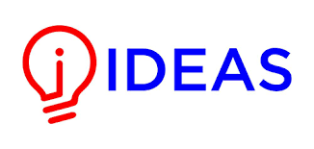Revolutionary Hologram Systems: Pioneering a New Frontier in Visual Technology
Keywords:
Holography, 2D images, 3D models, Fan projector, Virtual reality, Visual TechnologyAbstract
New technologies are enabling the development of consolidated, portable holographic displays that can be utilized in a variety of settings, making holographic content more accessible and shareable. Holographic displays represent objects in three dimensions, providing a more pragmatic and immersive viewing experience. This is particularly important in sectors such as architecture, design, and medical imaging, where the representation of depth can aid in comprehension and decision-making. This study presents a revolutionary and efficient method for converting 2D images into immersive 3D holograms using Blender software and a holographic FP. The process begins with Blender, an open-source 3D creative software that transforms 2D photographs into dynamic 3D models to add depth and realism. These transformed images are then uploaded to a user-friendly mobile app, which acts as an intermediary for seamless transfer to a holographic display. The smartphone app offers an intuitive interface for image customization and management. This study contributes to the understanding and practical application of 3D holographic displays by addressing key challenges and outlining the development process, resulting in a versatile tool. These recent breakthroughs in holography are expanding its potential applications and enhancing user experiences, making holographic technology increasingly significant in industries such as healthcare, education, entertainment, and data visualization.
References
G. B. J. Barcellos, Ekaterina Emmanuil Inglesis, “The Interactive Holography as Metaphor and Innovation in Optical Representation in Design,” Procedia Manuf., vol. 3, pp. 754–761, 2015, doi: https://doi.org/10.1016/j.promfg.2015.07.319.
G. W. S. D. Gabor, W. E. Kock, “Holography: The fundamentals, properties, and applications of holograms are reviewed,” Science (80-. )., vol. 173, no. 3991, pp. 11–23, 1971.
J. Barabas, “Holographic television: measuring visual performance with holographic and other 3D television technologies,” Ph.D. Diss. Massachusetts Inst. Technol. Cambridge, 2014, [Online]. Available: https://dspace.mit.edu/handle/1721.1/91863
X. Z. Y. Gao, K. Tan, J. Sun, T. Jiang, “Application of mixed reality technology in visualization of medical operations,” Chinese Med. Sci. J., vol. 34, no. 2, pp. 103–109, 2019, doi: https://doi.org/10.24920/003564.
C. U. J. Hatzl, D. Böckler, N. Hartmann, K. Meisenbacher, F. Rengier, T. Bruckner, “Mixed reality for the assessment of aortoiliac anatomy in patients with abdominal aortic aneurysm prior to open and endovascular repair: feasibility and interobserver agreement,” Vascular, vol. 3, no. 4, pp. 644–653, 2023, doi: 10.1177/17085381221081324.
V. F. B. Fida, F. Cutolo, G. di Franco, M. Ferrari, “Augmented reality in open surgery,” Updates Surg., vol. 70, no. 3, pp. 389–400, 2018, doi: 10.1007/s13304-018-0567-8.
B. S. F. K. West, S. Al-Nimer, V. R. Goel, J. H. Yanof, A. T. Hanlon, C. J. Weunski, “Three-dimensional holographic guidance, navigation, and control (3D-GNC) for endograft positioning in porcine aorta: feasibility comparison with 2-dimensional x-ray fluoroscopy,” J. Endovasc. Ther., vol. 28, no. 5, pp. 796–803, 2021, doi: 10.1177/15266028211025026.
S. R. A. Haleem, M. Javaid, R. P. Singh, R. Suman, “Holography and its applications for industry 4.0: An overview,” Internet Things Cyber-Physical Syst., vol. 2, pp. 42–48, 2022, doi: https://doi.org/10.1016/j.iotcps.2022.05.004.
Y. J. K. J. Kim, Y. Lim, K. Hong, H. Kim, H. E. Kim, J. Nam, “Electronic tabletop holographic display: design, implementation, and evaluation,” Appl. Sci., vol. 9, no. 4, p. 705, 2019, doi: https://doi.org/10.3390/app9040705.
Q. J. H. Wei, J. Xu, J. Jiang, B. Liang, “Holographic display in future automotive smart cockpit: application scenarios, interaction modals, and VACP analysis,” Adv. Fiber Laser Conf., vol. 12595, pp. 200–209, 2023.
H. L. Y. Liu, S. Wu, Q. Xu, “"[Retracted] Holographic Projection Technology in the Field of Digital Media Art,” Wirel. Commun. Mob. Comput., p. 9997037, 2021, doi: https://doi.org/10.1155/2021/9997037.
N. L. and D. Lefevre, “Holographic teaching presence: participant experiences of interactive synchronous seminars delivered via holographic videoconferencing,” Res. Learn. Technol., vol. 28, 2020, doi: https://doi.org/10.25304/rlt.v28.2265.
P. S. D. Blinder, A. Ahar, S. Bettens, T. Birnbaum, A. Symeonidou, H. Ottevaere, “Signal processing challenges for digital holographic video display systems,” Signal Process. Image Commun., vol. 70, pp. 114–130, 2019, doi: https://doi.org/10.1016/j.image.2018.09.014.
“No Title”, [Online]. Available: https://www.turkishexporter.net/en/3d-hologram-led-fan-tr-409867
S. R. I.Pedersen, N. Gale, P. Mirza-Babaei, “More than meets the eye: The benefits of augmented reality and holographic displays for digital cultural heritage,” J. Comput. Cult. Herit., vol. 10, no. 2, pp. 1–15, 2017, doi: https://doi.org/10.1145/3051480.
J. S. and T. D. Wilkinson, “Automotive holographic head-up displays,” Adv. Mater., vol. 34, no. 19, p. 2110463, 2022.
X. C. H. Tu, T. Yuan, Z. Wei, Y. Chen, “Fabrication of 3D computer-generated hologram inside glass by femtosecond laser direct writing,” Opt. Mater. (Amst)., vol. 135, p. 113228, 2023, doi: https://doi.org/10.1016/j.optmat.2022.113228.
G. C. D. Mavrikios, K. Alexopoulos, K. Georgoulias, S. Makris,and G. Michalos, “Using holograms for visualizing and interacting with educational content in a teaching factory,” Procedia Manuf., vol. 31, pp. 404–410, 2019, doi: https://doi.org/10.1016/j.promfg.2019.03.063.
N. K. F. Hamzeh, H. Abou-Ibrahim, A. Daou, and M. Faloughi, “3D visualization techniques in the AEC industry: the possible uses of holography,” J. Inf. Technol. Constr., vol. 24, pp. 239–255, 2019, [Online]. Available: https://www.semanticscholar.org/paper/3D-visualization-techniques-in-the-AEC-industry%3A-of-Hamzeh-Abou Ibrahim/6bb1560969a668c0847fb141ebb15cccccbd58b4

Downloads
Published
How to Cite
Issue
Section
License
Copyright (c) 2024 50SEA

This work is licensed under a Creative Commons Attribution 4.0 International License.




















